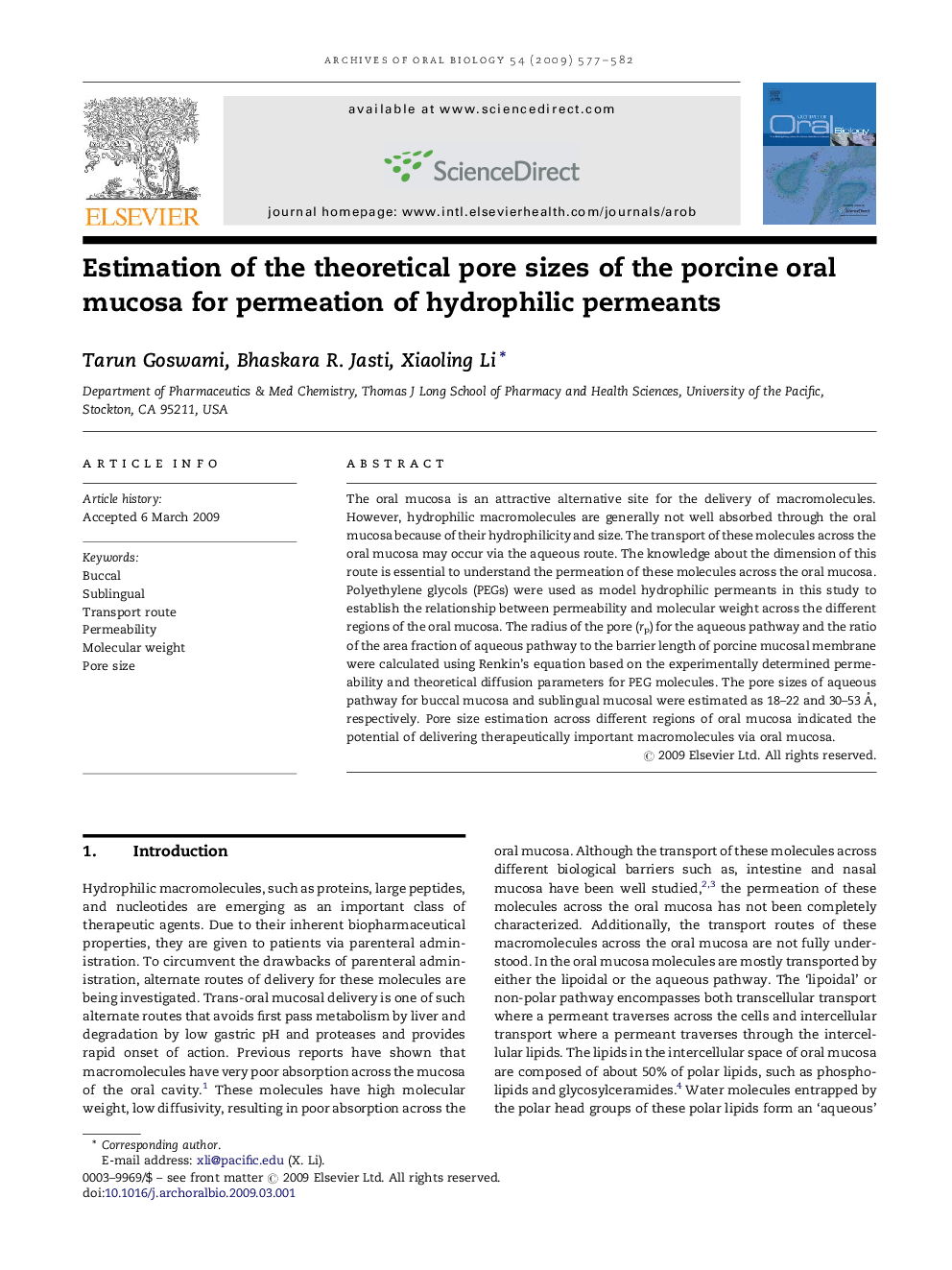| Article ID | Journal | Published Year | Pages | File Type |
|---|---|---|---|---|
| 3121276 | Archives of Oral Biology | 2009 | 6 Pages |
The oral mucosa is an attractive alternative site for the delivery of macromolecules. However, hydrophilic macromolecules are generally not well absorbed through the oral mucosa because of their hydrophilicity and size. The transport of these molecules across the oral mucosa may occur via the aqueous route. The knowledge about the dimension of this route is essential to understand the permeation of these molecules across the oral mucosa. Polyethylene glycols (PEGs) were used as model hydrophilic permeants in this study to establish the relationship between permeability and molecular weight across the different regions of the oral mucosa. The radius of the pore (rp) for the aqueous pathway and the ratio of the area fraction of aqueous pathway to the barrier length of porcine mucosal membrane were calculated using Renkin's equation based on the experimentally determined permeability and theoretical diffusion parameters for PEG molecules. The pore sizes of aqueous pathway for buccal mucosa and sublingual mucosal were estimated as 18–22 and 30–53 Å, respectively. Pore size estimation across different regions of oral mucosa indicated the potential of delivering therapeutically important macromolecules via oral mucosa.
